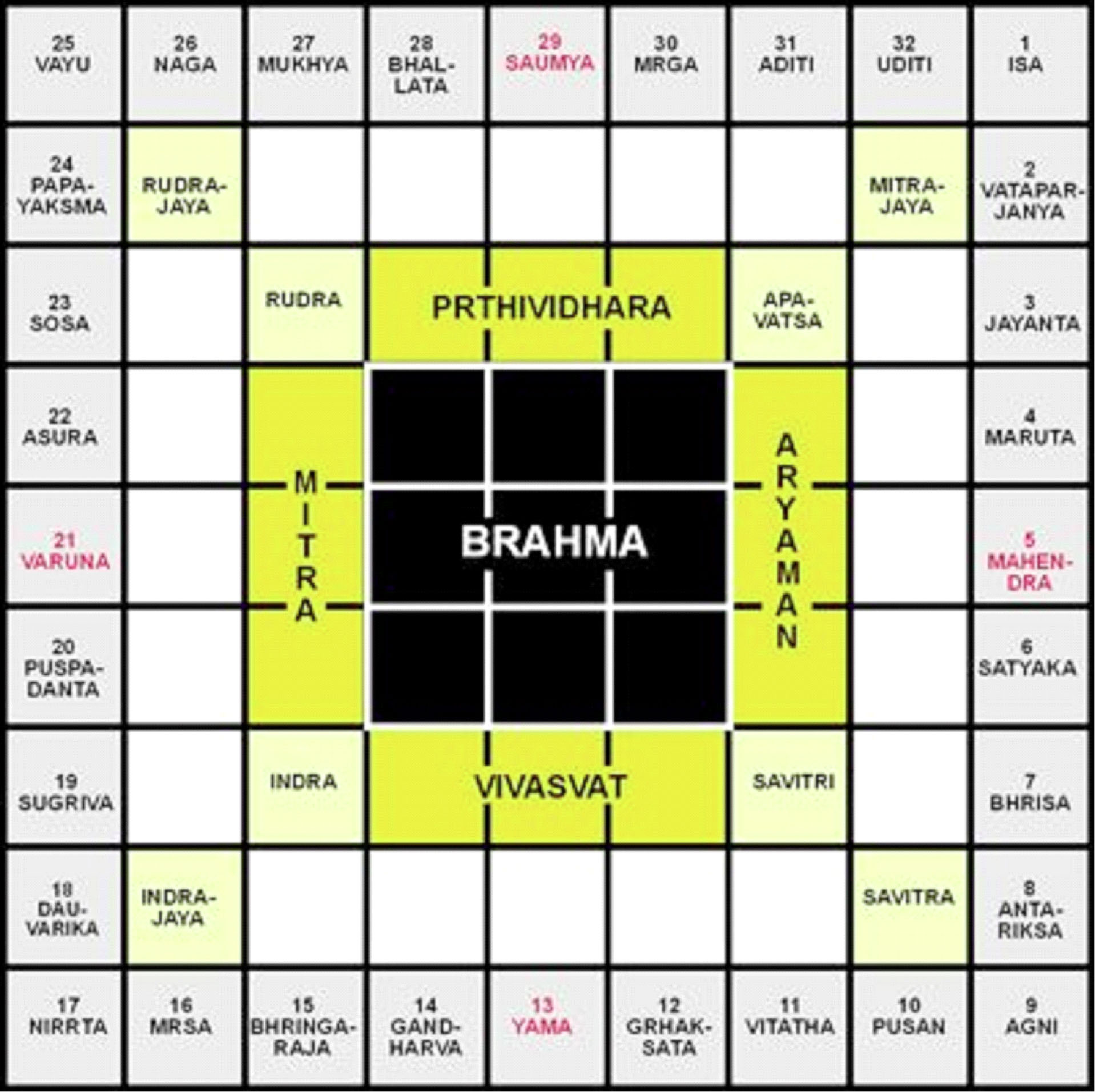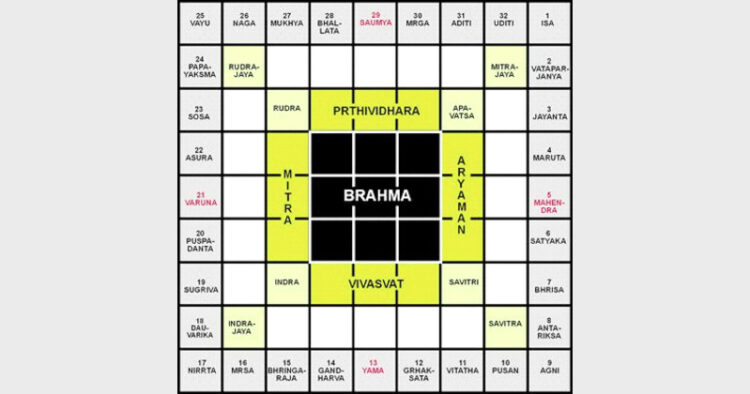Vastu Purusha Mandal is a huge storehouse of knowledge related to construction and design. Decodifying this knowledge for application in today’s context is much needed and is possible by incorporating this in formal architecture education
-Dr Ujwala Chakradeo

Vastu Purusha Mandal is always square in shape. Sometimes it is 8×8 made of 64 squares and sometimes 9×9, 81 squares. For temple design, mostly 8×8 form is used.
32 Gods of 32 constellations, planets, eight directions, north-south east-west main direction, northeast, southwest southeast and northwest direction; the path of Sun’s journey from east to west every day, and many other things contribute to the design of Vastu Purusha Mandal.
32 Goddesses are at the outer rim, and Brahma is in the centre of the Mandal. Every square of Vastu Purusha Mandal is dedicated to a particular god, and the location and position of each God in the Mandal is secured. There is a reason for these locations, and a deeper calculation of constellations and stars form the basis of these placements. Information about Vastu Purusha Mandal is available through many sutras and verses. (shlok).
If a temple plan is to be prepared with Vastu Purusha Mandal’s help, a thorough study of this Mandal and its making is needed for appropriate interpretation. These Vastu Purusha Mandal are relevant even in today’s context. A person who accomplished this study to be capable of making temple plans and design was called Sthapati.
Sthapati was always lauded by society for his knowledge of temple design and construction. Formal education of Sthapati happened at the Guru Ashram or at the site of construction. The main assistant of Sthapati was called sutragrahin. The site supervisor’s job profile (in today’s context) is nearest to work carried out by Sutragrahin on the site.
The material of construction in those days was mostly stone. A person who carved and worked on the stone was called a Takasaki, and one who placed these stones at appropriate locations in the construction was wardhaki.
Vastu Purusha Mandal was not used only for temple construction; it was also used for the construction and design of palaces and other structures and also for designing towns and cities.














Comments